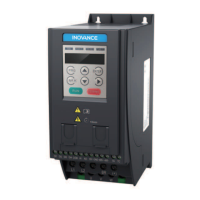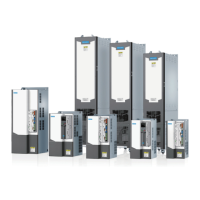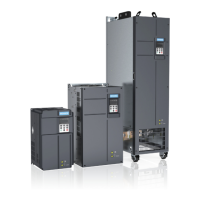Function Application
‑536‑
Auto‑tuning Method Applicable Scenario Effect
Static auto‑tuning on all parameters of
the asynchronous motor (Rs, Rr, L0,
Lm, and IO)
The motor cannot be disconnected from the load and
dynamic auto‑tuning on all parameters is not allowed.
Better
Dynamic auto‑tuning 2 of the
asynchronous motor (inertia auto‑
tuning only in FVC)
The motor and the system require high‑speed
revolution. Auto‑tuning with no load, light load (below
80% load), or pure inertia load is supported.
‑
Dynamic auto‑tuning 3 of the
asynchronous motor (Auto‑tuning on
mutual inductance curve requires no
load, light load, or pure inertia load; V/
f, SVC, and FVC modes are supported)
The motor and the system require high‑speed
revolution. Auto‑tuning with no load, light load (below
10% load), or pure inertia load is supported.
‑
Static auto‑tuning on partial
parameters of the synchronous motor
(excluding back EMF)
It is applicable to auto‑tuning of the synchronous
motor with load and to scenarios where the motor
cannot be disconnected from the load.
‑
No‑load dynamic auto‑tuning on all
parameters of synchronous motor
The motor can be disconnected from the load. ‑
Static auto‑tuning on all parameters of
the synchronous motor (excluding the
encoder installation angle)
The motor cannot be disconnected from the load and
dynamic auto‑tuning on all parameters is not allowed.
‑
Synchronous motor inertia auto‑tuning
(only in FVC)
This method is applicable to scenarios that requires
fast dynamic response and that the load must be
connected during auto‑tuning.
‑
In addition to the above 10 auto‑tuning methods, you can also manually enter motor
parameters.
You can perform motor auto‑tuning either through commands from the operating
panel or communication commands. You can set F0‑02 to select commands.
For the Modbus, PROFIBUS, and CANopen protocols, the PKW parameters support
auto‑tuning but the PZD parameters do not. To use communication control for motor
auto‑tuning, set F1‑37 or A2‑37 to select an auto‑tuning mode, and then enter the
command.
Example
In the following example, parameters of motor 1 (F0‑24 is set to 0, indicating that
motor parameter group 1 is selected) are used to illustrate motor auto‑tuning
methods. For auto‑tuning on motor 2, set F0‑24 to 1 (motor parameter group 2) and
follow the steps of auto‑tuning on motor 1. For parameter settings, see settings of the
A2 group parameters.
● Procedure of static auto‑tuning on partial parameters of the asynchronous motor

